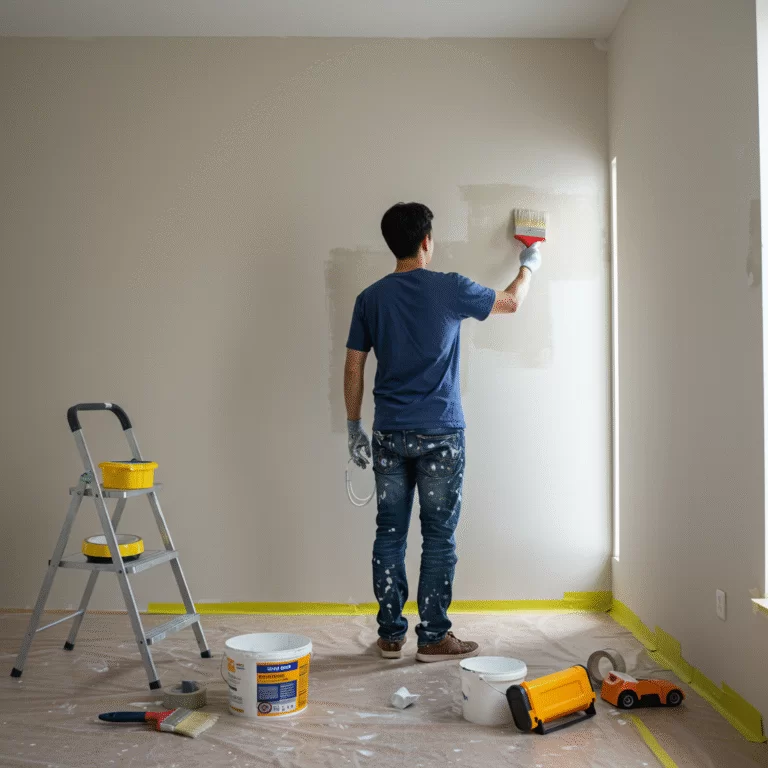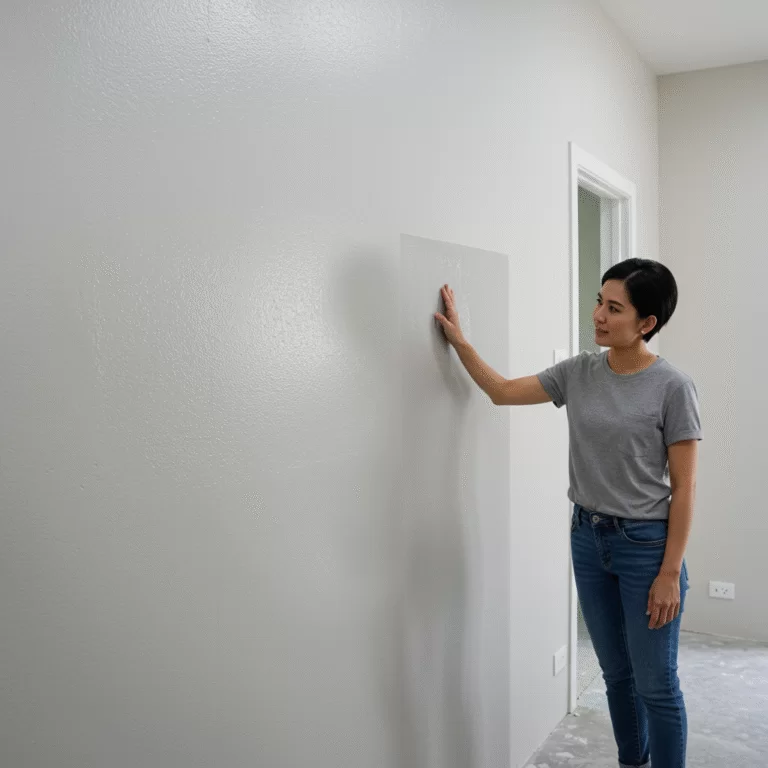Imagine a home where every wall boasts a flawless, professional finish, transforming the entire atmosphere. Achieving this level of perfection goes beyond simply choosing the right color. It hinges significantly on the art and science of . This often-underestimated process is the backbone of any successful painting project, determining not just the aesthetic appeal but also the longevity and durability of your efforts. Without proper application, even the most expensive paint can fall short of expectations, leading to frustrating imperfections and premature wear. Are you ready to elevate your home improvement skills and learn how to achieve truly impeccable, lasting results for every surface?
Why Your Painting Application Matters for a Perfect Finish
Painting Application encompasses far more than just spreading paint onto a surface. It is a systematic process that profoundly impacts the durability, visual appeal, and your overall satisfaction with the finished work. A meticulous approach ensures that paint adheres correctly, provides consistent and rich coverage, and creates a smooth, uniform surface that genuinely enhances your living space. Conversely, a rushed or improper application can lead to a host of common frustrations. Think about uneven coats that show through, unsightly drips, prominent brush marks, or paint that peels and chips far too soon. These issues not only detract from the beauty of your home but also negate the time, effort, and money invested in your project. Understanding and mastering the nuances of application is the critical difference between a mediocre paint job and one that truly stands out, reflecting quality and attention to detail.
Essential Elements for Effective Painting Application
To achieve truly professional results and ensure your paint job lasts, focus on these critical aspects ได้แก่
1. Meticulous Surface Preparation
- Cleaning and Degreasing: Ensuring the surface is immaculately clean is paramount. Remove all dirt, dust, grease, and grime using appropriate cleaning solutions. Any residue left behind will prevent the paint from adhering properly, leading to peeling or bubbling.
- Repairing Imperfections: Before priming or painting, meticulously fill any holes, cracks, or dents using patching compounds. Once dry, sand these areas smooth so they are flush with the rest of the surface. Uneven textures or repairs will be glaringly visible under a fresh coat of paint.
- Priming: Understanding when and why to prime is crucial. Primer creates a uniform base, improves paint adhesion, provides better color uniformity, and can block stains from bleeding through. Different primers exist for various surfaces, such as drywall, wood, or previously painted surfaces.
- Taping and Masking: Protect adjacent surfaces that you do not wish to paint. Use high-quality painter’s tape, pressing it firmly along the edges to prevent paint bleed. Cover floors and furniture with drop cloths to catch any drips or spills, ensuring a clean workspace.
2. Selecting the Right Tools and Materials
- Brushes: The type and size of brush impact your control and finish. Natural bristles are ideal for oil-based paints, while synthetic bristles excel with latex paints. Choose smaller brushes for precise cutting-in around trim and larger ones for broader areas. Quality brushes hold more paint and leave fewer brush marks.
- Rollers: Roller nap sizes vary to suit different surface textures. A short nap (1/4 to 3/8 inch) is best for smooth surfaces like drywall, while longer naps (1/2 to 3/4 inch) are effective for textured walls or ceilings. The right nap ensures even paint pickup and distribution.
- Paint Type: Match the paint to the surface and the desired finish. Latex paints are water-based, easy to clean, and quick-drying, making them popular for interiors. Oil-based paints offer a harder, more durable finish, often used for trim or high-traffic areas. Finishes range from matte for minimal sheen to high-gloss for maximum reflectivity.
- Other Essentials: Do not overlook crucial accessories such as paint trays for even roller loading, stir sticks to thoroughly mix paint, and plenty of drop cloths and clean rags for spills or quick cleanups. Always ensure your tools are clean before starting.
3. Mastering Application Techniques
- Proper Loading: Avoid overloading brushes or rollers, which leads to drips and uneven coverage. For brushes, dip only about one-third of the bristles into the paint. For rollers, roll it gently in the paint tray until it is evenly saturated but not dripping.
- Cutting In: This technique involves painting a straight, clean line along edges, ceilings, and trim where the roller cannot reach. Use a steady hand, a quality angled brush, and maintain consistent pressure for crisp lines. Work in small sections for better control.
- Rolling Technique: For walls, use a W-pattern or M-pattern to distribute paint evenly over a section, then fill in the pattern with vertical strokes. Maintain consistent pressure and always try to roll into a wet edge to avoid lap marks, ensuring a seamless finish across the entire surface.
- Number of Coats: Most painting projects benefit from two coats for optimal color depth, coverage, and durability. Always allow the first coat to dry completely according to the manufacturer’s instructions before applying the second. Rushing this can cause peeling or an uneven finish.
4. Ensuring Proper Drying and Curing
- Environmental Factors: Temperature and humidity significantly affect drying times. Paint dries best in moderate temperatures (60-80°F or 15-27°C) with low to moderate humidity. High humidity can slow drying considerably, while extreme heat can cause it to dry too quickly, leading to brush marks.
- Ventilation: Ensure good airflow in the painted area by opening windows or using fans. This helps to dissipate fumes and accelerates the drying process, promoting a more even and thorough cure. Proper ventilation is also crucial for your safety when working with paints.
- Curing Time: Differentiate between dry to touch and fully cured. While paint may feel dry within hours, it can take days or even weeks for it to fully cure and achieve its maximum hardness and durability. Avoid placing furniture or heavy objects against newly painted surfaces until they are fully cured to prevent damage.
Considerations for Diverse Painting Application Projects
The optimal Painting Application approach can vary significantly depending on the surface you are working with. Understanding these specific considerations ensures that you achieve the best possible finish for every part of your home.
- Walls: For interior walls, focus on using rollers with the appropriate nap size for your surface texture. Employ large, even strokes to cover broad areas efficiently. Good lighting is essential to spot any missed spots or inconsistencies before the paint dries. When painting over existing vibrant colors, consider a tinted primer to ensure consistent new color coverage.
- Trim and Doors: These areas demand precision and a smooth finish. Use high-quality angled brushes for cutting in around edges and details. For doors, consider removing them and painting them horizontally to prevent drips and ensure an even application. Light sanding between coats on trim can create an exceptionally smooth surface.
- Ceilings: Painting ceilings can be physically demanding. Use an extension pole with your roller to reduce strain. Apply paint in sections, working towards a light source to help identify missed spots. Minimize splatter by not overloading the roller and using a paint shield if necessary. Ensure even coverage to prevent streaking that becomes visible when light reflects off the surface.
- Cabinets and Furniture: Achieving a factory-like finish on cabinets or furniture requires meticulous preparation. Degreasing is particularly critical here. Use fine-finish rollers or a paint sprayer for the smoothest results. Lightly sand between each coat of paint or primer to improve adhesion and create a silky-smooth texture. Allow ample curing time before heavy use.
- Exterior Painting: Weather conditions are a primary consideration for exterior Painting Application. Ensure you paint when temperatures are stable and no rain is expected. Use specialized exterior primers and paints designed to withstand the elements. Thorough preparation, including scraping loose paint and power washing, is vital for long-lasting protection against weather damage.
Your Path to Perfect Painting Application Starts Here
Ultimately, achieving an excellent finish through careful Painting Application is within reach for anyone willing to invest time in preparation, select the right tools, and master effective techniques. It is this attention to detail that transforms an ordinary paint job into a durable, aesthetically pleasing surface that significantly enhances the value and enjoyment of your home. By understanding the nuances of surface preparation, the importance of quality tools, the precision required in technique, and the patience needed for drying and curing, you are now equipped to approach any painting project with confidence. Embrace these insights, and watch as your home projects achieve a professional polish. What home surface will you transform next with your newfound painting expertise?
Why choose Asia Renovatech Limited?
As a specialized turnkey contractor in building renovation techniques and chemical construction materials, we understand that successful renovation relies on using the right materials and applying them correctly. That’s why we source innovative, high-quality materials and ensure our expert team installs them flawlessly the first time. Our proven track record demonstrates our ability to provide long-lasting, durable, and effective solutions that exceed expectations. We are trusted by building owners, engineers, and architects to deliver exceptional results using the latest technology, ensuring your project is handled with expertise from start to finish.




